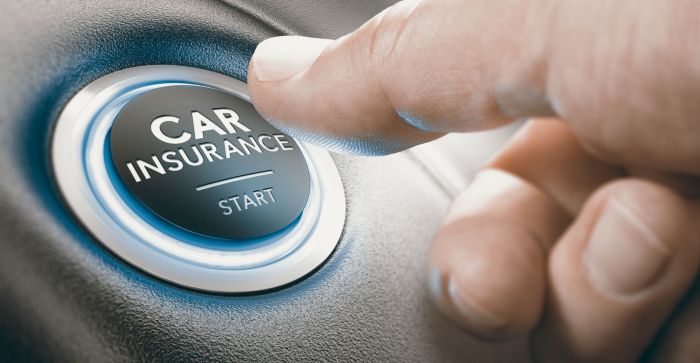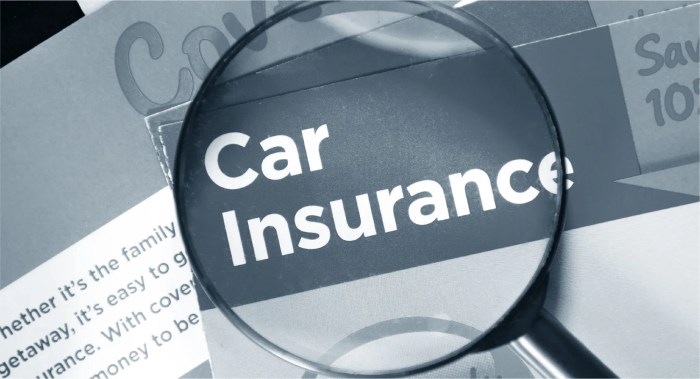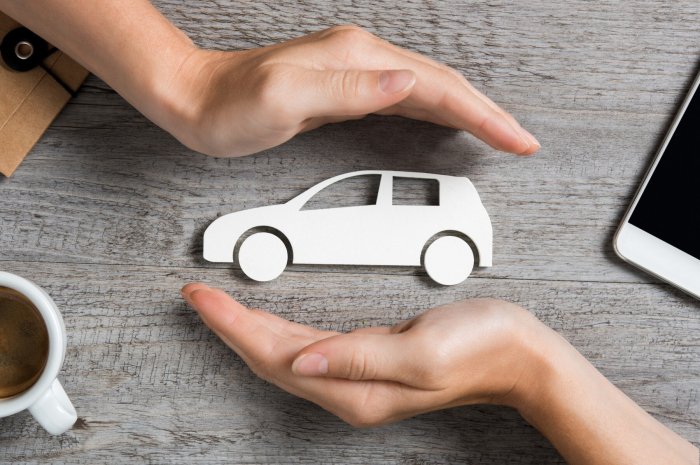The seemingly simple act of driving hides a complex web of legal and financial responsibilities. Understanding auto and car insurance is crucial, not just for complying with the law, but for protecting yourself financially in the event of an accident. This guide unravels the intricacies of auto insurance, from choosing the right policy to handling claims and understanding the legal implications of driving. We’ll explore the different types of coverage, factors affecting premiums, and practical advice to help you make informed decisions.
Whether you’re a seasoned driver or just starting out, navigating the insurance landscape can feel daunting. This guide aims to demystify the process, providing clear explanations and practical tips to empower you to make the best choices for your individual needs and budget. We’ll delve into the specifics of various coverage options, highlighting the key differences and helping you determine the level of protection that best suits your circumstances.
Factors Affecting Insurance Premiums

Understanding the factors that influence your car insurance premiums is crucial for making informed decisions and potentially saving money. Insurance companies use a complex algorithm to assess risk and determine how much to charge each driver. This assessment considers various aspects of your profile and driving habits.
Driving History
Your driving history significantly impacts your insurance premiums. A clean driving record, free of accidents and traffic violations, generally translates to lower premiums. Conversely, accidents and tickets increase your risk profile, leading to higher premiums. The severity of the accident or violation also plays a role; a major accident resulting in significant damage or injuries will have a more substantial impact than a minor fender bender or a speeding ticket. For example, a driver with three at-fault accidents in the past three years will likely pay considerably more than a driver with a spotless record. Insurance companies often use a points system, where each incident adds points to your record, directly affecting your premium. The number of years since your last incident also matters; older incidents generally have less weight than recent ones.
Vehicle Type and Value
The type and value of your vehicle are key determinants of your insurance premiums. Generally, sports cars and high-performance vehicles are considered riskier to insure due to their higher speeds and potential for more severe accidents. Consequently, their insurance premiums tend to be higher. Conversely, smaller, less expensive vehicles typically command lower premiums. The vehicle’s value is another crucial factor; a more expensive car means a higher payout for the insurance company in the event of a claim, resulting in a higher premium. For instance, insuring a luxury SUV will cost significantly more than insuring a compact economy car. The vehicle’s safety features also play a role; cars with advanced safety technology like automatic emergency braking or lane departure warning systems may qualify for discounts.
Discounts
Several discounts can significantly lower your insurance premiums. Good student discounts are commonly offered to students maintaining a certain GPA, reflecting a lower perceived risk. Safe driver discounts reward drivers who demonstrate responsible driving habits, often through telematics programs that track driving behavior. Other discounts might include multi-car discounts (insuring multiple vehicles with the same company), bundling discounts (combining car insurance with other types of insurance like homeowners or renters insurance), and discounts for anti-theft devices or driver’s education courses. For example, a good student discount might reduce premiums by 10-15%, while a safe driver discount based on telematics data could offer savings of 5-20% depending on driving behavior. These discounts can substantially reduce the overall cost of insurance, making it worthwhile to explore eligibility.
Auto Insurance and Legal Considerations
Driving without auto insurance carries significant legal and financial ramifications. Understanding your policy and navigating potential disputes are crucial for responsible vehicle ownership. This section will explore the legal implications of uninsured driving, the importance of policy comprehension, situations where coverage might be limited, and strategies for resolving disagreements with insurance providers.
Legal Implications of Driving Without Insurance
Driving without insurance is illegal in most jurisdictions. Penalties vary widely but often include hefty fines, license suspension or revocation, and even potential jail time. Furthermore, being involved in an accident without insurance can lead to significant financial liability, as you would be personally responsible for all damages and medical expenses incurred by other parties involved. This could result in the seizure of assets to satisfy judgments against you. The severity of the consequences depends on the specific laws of your state and the circumstances of the incident. For example, in some states, a first offense might result in a fine and a short suspension, while subsequent offenses could lead to much harsher penalties.
Understanding Your Policy’s Terms and Conditions
Carefully reviewing your auto insurance policy is paramount. This includes understanding your coverage limits (liability, collision, comprehensive), deductibles, exclusions, and any specific endorsements or riders you may have. Failure to understand these terms can lead to unexpected costs and denied claims. For instance, a driver might assume their policy covers damage to their car in all situations, but many policies exclude damage caused by events such as floods or earthquakes unless specific coverage has been purchased. Knowing what is and isn’t covered will prevent unpleasant surprises in the event of an accident or other covered incident.
Situations Where Insurance Coverage May Not Apply
There are several scenarios where your insurance company may deny a claim. These often involve violations of policy terms, such as driving under the influence of alcohol or drugs, using your vehicle for unauthorized commercial purposes, or failing to report an accident promptly. Furthermore, certain types of damage may not be covered, such as damage caused by wear and tear or intentional acts. For example, if you are driving while intoxicated and cause an accident, your insurance company might deny coverage, leaving you personally responsible for all damages. Similarly, if you use your personal vehicle for a ride-sharing service without informing your insurer, a claim resulting from an accident during that service might be rejected.
Handling Disputes with Insurance Companies
Disputes with insurance companies can arise over claim amounts, coverage eligibility, or the handling of a claim. It’s crucial to maintain detailed records, including police reports, medical bills, repair estimates, and all communication with the insurance company. If a dispute cannot be resolved amicably through direct communication, consider seeking assistance from a qualified insurance professional or legal counsel. Many states have insurance departments that can help mediate disputes between policyholders and insurance companies. Understanding your rights and having proper documentation are key to a successful resolution. For example, if your insurance company offers a settlement you feel is too low, you have the right to negotiate or seek a second opinion on the value of the damages.
Illustrative Examples of Insurance Scenarios

Understanding how auto insurance applies in real-world scenarios is crucial. The following examples illustrate different accident types and the potential coverage implications. Remember that specific coverage depends on your individual policy and the details of the accident.
Scenario 1: Rear-End Collision
A driver, let’s call her Sarah, is stopped at a red light. Another driver, Mark, is distracted and fails to brake in time, rear-ending Sarah’s vehicle. Sarah’s car sustains significant rear-end damage, requiring approximately $5,000 in repairs. Sarah suffers whiplash and requires medical treatment costing $3,000. Mark’s insurance company is at fault and covers Sarah’s vehicle repairs and medical expenses under their liability coverage. Mark’s insurance will also likely cover Sarah’s lost wages if she missed work due to the injury. If Sarah had collision coverage on her own policy, she could file a claim with her insurer for any deductible and potentially expedite the repair process, although the at-fault party’s insurance is ultimately responsible.
Scenario 2: Intersection Collision (Both at Fault)
Two drivers, David and Jessica, collide at an intersection. Both drivers enter the intersection simultaneously, failing to yield the right-of-way. David’s car sustains $4,000 in damage, and Jessica’s car suffers $6,000 in damage. Both drivers sustain minor injuries, requiring medical treatment costing $1,000 each. In this scenario of shared fault, both insurance companies will likely be involved. The claim process will involve determining the percentage of fault for each driver, often based on police reports and witness statements. Each driver’s insurance company will cover their own damages, minus any deductible, up to the limits of their collision coverage. Medical expenses will be handled through each driver’s personal injury protection (PIP) coverage, or through the other driver’s liability coverage, depending on the fault determination.
Scenario 3: Uninsured Motorist Collision
Alice is involved in an accident with an uninsured driver. The uninsured driver runs a red light and causes significant damage to Alice’s car, estimated at $8,000. Alice suffers a broken leg requiring surgery and extensive physical therapy, costing $15,000. In this case, Alice’s uninsured/underinsured motorist (UM/UIM) coverage will be crucial. This coverage protects her from financial losses caused by drivers without adequate insurance. Alice’s UM/UIM coverage will help pay for her vehicle repairs, medical expenses, and potentially lost wages. The amount covered depends on her policy limits. If her UM/UIM coverage is insufficient to cover all her losses, she may need to pursue further legal action.
Typical Auto Insurance Policy Document Structure
A visual representation of a typical auto insurance policy document might look like this:
“`
+————————————————-+
| Auto Insurance Policy |
+————————————————-+
| 1. Declarations Page: Policyholder info, |
| policy number, coverage start/end dates, |
| vehicles covered, premium amounts. |
+————————————————-+
| 2. Liability Coverage: Bodily injury & |
| property damage liability limits. |
+————————————————-+
| 3. Collision Coverage: Covers damage to |
| your vehicle in an accident, regardless of |
| fault. Deductible specified. |
+————————————————-+
| 4. Comprehensive Coverage: Covers damage |
| to your vehicle from non-collision events |
| (e.g., theft, vandalism, natural disasters).|
| Deductible specified. |
+————————————————-+
| 5. Uninsured/Underinsured Motorist Coverage:|
| Protects you if hit by an uninsured driver. |
+————————————————-+
| 6. Medical Payments Coverage (Med-Pay): |
| Covers medical expenses for you and your |
| passengers, regardless of fault. |
+————————————————-+
| 7. Personal Injury Protection (PIP): |
| Covers medical expenses and lost wages for |
| you and your passengers, regardless of fault.|
+————————————————-+
| 8. Exclusions & Limitations: Specific |
| situations not covered by the policy. |
+————————————————-+
| 9. Definitions: Clarification of terms |
| used in the policy. |
+————————————————-+
“`
Final Wrap-Up

Securing adequate auto and car insurance is not merely a legal requirement; it’s a critical step in responsible driving and financial planning. By understanding the nuances of different policies, factors influencing premiums, and the claims process, you can confidently navigate the complexities of insurance and protect yourself against unforeseen circumstances. Remember, the right insurance policy provides peace of mind and financial security on the road. Take the time to research, compare options, and ask questions to ensure you have the coverage you need.
Expert Answers
What is the difference between liability and collision coverage?
Liability coverage pays for damages you cause to others. Collision coverage pays for damages to your vehicle, regardless of fault.
How often can I expect my insurance premiums to change?
Premiums can change annually, or even more frequently, based on factors like your driving record, claims history, and changes in the insurance market.
What happens if I’m in an accident and I’m not at fault?
Even if you’re not at fault, you should still report the accident to your insurance company. They will investigate and work to recover damages from the at-fault driver’s insurance.
Can I get my insurance canceled?
Yes, your insurance can be canceled for various reasons, including non-payment of premiums, fraudulent claims, or serious driving violations.
What documents do I need to file a claim?
Typically, you’ll need police reports, photos of the damage, contact information for all parties involved, and details of your policy.